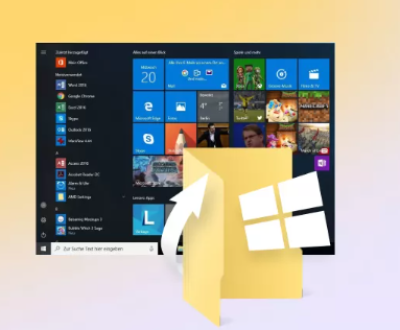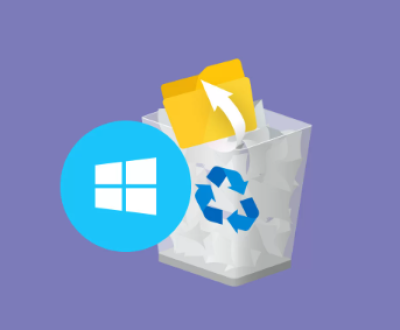Google Maps is a powerful tool that offers a wide range of features for businesses, researchers, and individuals alike. One such useful feature is the ability to import data from a .CSV (Comma – Separated Values) file. This allows users to plot multiple locations on the map, add custom information, and create detailed maps for various purposes such as business location mapping, event planning, or geographical data analysis. However, it is not uncommon to encounter errors during the import of a .CSV file for Google Maps.
1. Incorrect File Format
Missing Headers: A .CSV file for Google Maps import must have specific headers that correspond to the data columns. For example, headers like “Name”, “Address”, “Latitude”, “Longitude” are commonly used. If these headers are missing or misspelled, Google Maps will not be able to recognize the data correctly.

Inconsistent Delimiters: By default, a .CSV file uses commas as delimiters to separate values. However, if the file uses a different delimiter such as semicolons or tabs, and Google Maps is expecting commas, it will lead to an import error.
Encoding Issues: The character encoding of the .CSV file can also cause problems. If the file is saved in an encoding that Google Maps does not support, such as an uncommon legacy encoding, special characters may not be displayed correctly, or the import may fail altogether.
2. Data Quality Issues
Invalid Addresses or Coordinates: If the addresses in the .CSV file are misspelled, incomplete, or do not exist, Google Maps will not be able to geocode them. Similarly, if the latitude and longitude values are out of the valid range (-90 to 90 for latitude and -180 to 180 for longitude), the import will fail.
Duplicate Entries: Having duplicate rows in the .CSV file can sometimes cause issues during the import process. Google Maps may not handle duplicate data well, especially if it is trying to create unique map markers.
Missing Data: Some columns in the .CSV file may be required for the import. For example, if the “Address” column is empty for a significant number of rows and there are no valid latitude and longitude values, Google Maps will not be able to plot the locations.
3. Google Maps API and Account Limitations
API Quota Exceeded: Google Maps uses APIs to perform various operations, including geocoding addresses. If you have exceeded the API quota for your Google Maps account, you may encounter errors during the import process. This can happen if you are trying to import a large number of addresses at once.
Account Permissions: Your Google Maps account may not have the necessary permissions to import .CSV files. This could be due to incorrect account settings, expired subscriptions, or other security – related issues.
4. Network and Server – Side Issues
Poor Internet Connection: A slow or unstable internet connection can cause problems during the import process. If the connection drops while Google Maps is trying to read the .CSV file or perform geocoding operations, the import may fail.
Google Maps Server Outages: Sometimes, Google Maps servers may experience outages or maintenance issues. During these periods, you may encounter errors when trying to import a .CSV file, even if your file and data are correct.
Diagnosing the Import Error
1. Read the Error Message
Google Maps usually provides an error message when the import fails. Carefully read this message as it can give you valuable clues about the cause of the error. For example, if the message says “Invalid headers”, it indicates that there is a problem with the column headers in your .CSV file.
2. Check the File Format
Open the .CSV File in a Text Editor: Open the .CSV file in a simple text editor like Notepad (on Windows) or TextEdit (on Mac). Check the headers to ensure they are correct and in the right order. Also, look for any unusual characters or inconsistent delimiters.
Verify the Encoding: You can check the encoding of the file in most text editors. Make sure it is set to a common encoding like UTF – 8. which is widely supported by Google Maps.
3. Review the Data
Validate Addresses and Coordinates: Manually check a few sample addresses and coordinates in the file. Try to look up the addresses on Google Maps directly to see if they are valid. For coordinates, make sure they are within the valid range.
Check for Duplicates and Missing Data: Use spreadsheet software like Microsoft Excel or Google Sheets to check for duplicate rows and missing values in the columns. You can use functions like “Remove Duplicates” and “Find and Replace” to clean up the data.
4. Check API and Account Settings
Review API Quotas: Log in to your Google Cloud Console and check the API usage for Google Maps services. If you have exceeded the quota, you may need to upgrade your account or wait for the quota to reset.
Verify Account Permissions: Make sure your Google Maps account has the necessary permissions to import .CSV files. Check the account settings and subscription details to ensure everything is in order.
Resolving the Import Error
1. Fixing File Format Issues
Correct the Headers: If the headers are missing or misspelled, open the .CSV file in a text editor or spreadsheet software and correct them. Make sure they match the expected headers for Google Maps import.
Standardize Delimiters: If the file uses a non – standard delimiter, you can use spreadsheet software to convert the delimiter to commas. In Excel, for example, you can use the “Text to Columns” feature to split the data based on the existing delimiter and then save the file with commas as delimiters.
Change the Encoding: If the encoding is incorrect, open the file in a text editor and save it with the correct encoding (usually UTF – 8). In Notepad, you can go to “File” > “Save As” and select “UTF – 8” from the encoding dropdown.
2. Improving Data Quality
Clean Up Addresses and Coordinates: Use online address validation tools to correct misspelled or incomplete addresses. For coordinates, double – check the source and correct any values that are out of range.
Remove Duplicates: In spreadsheet software, select the entire data range and use the “Remove Duplicates” feature. This will eliminate any duplicate rows in the file.
Fill in Missing Data: If there are missing values in important columns, try to find the missing information and fill it in. If it is not possible, you may need to consider removing the rows with missing data.
3. Dealing with API and Account Limitations
Reduce API Usage: If you are exceeding the API quota, try importing the data in smaller batches. This will reduce the number of API requests made at once and may prevent quota – related errors.
Upgrade Your Account: If you regularly need to import large amounts of data, consider upgrading your Google Maps account to a plan with higher API quotas.
Contact Google Support: If you believe there is an issue with your account permissions, contact Google Maps support. They can help you verify and resolve any permission – related problems.
4. Addressing Network and Server – Side Issues
Improve Your Internet Connection: Try switching to a more stable network, such as a wired connection instead of Wi – Fi. You can also try restarting your router or contacting your internet service provider if the problem persists.
Wait for Server Outages to Resolve: If Google Maps servers are experiencing an outage, check the Google Cloud Status Dashboard for updates. Wait until the servers are back up and running before attempting to import the .CSV file again.
About us and this blog
Panda Assistant is built on the latest data recovery algorithms, ensuring that no file is too damaged, too lost, or too corrupted to be recovered.
Request a free quote
We believe that data recovery shouldn’t be a daunting task. That’s why we’ve designed Panda Assistant to be as easy to use as it is powerful. With a few clicks, you can initiate a scan, preview recoverable files, and restore your data all within a matter of minutes.

 Try lt Free
Try lt Free Recovery success rate of up to
Recovery success rate of up to









